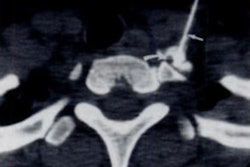Using a deep learning algorithm with coronary CT angiography (CCTA) helps predict the success of percutaneous recanalization of chronic total occlusion (CTO) lesions, according to a study published November 14 in Radiology.
The findings suggest that there's another way to effectively evaluate the success of the intervention procedure (i.e., percutaneous coronary intervention, or PCI), wrote a team led by Zhen Zhou, PhD, of Beijing Anzhen Hospital in China.
"[Our] deep learning … model accurately predicted the percutaneous recanalization outcomes of CTO lesions and increased the efficiency of noninvasively grading the difficulty of PCI," the group noted.
CCTA has long been considered useful for guiding the revascularization of chronic total occlusion, but predicting whether PCI will be successful has often been tricky, the authors wrote. That's why adding deep learning to CCTA shows promise.
"Deep learning is expected to predict success of PCI for CTO lesions more efficiently," the investigators explained.
Zhou and colleagues developed a deep-learning model to predict guidewire crossing and PCI outcomes for CTO using CCTA and compared its performance to manual prediction scores from tools such as the CT Registry of Chronic Total Occlusion Revascularization, the Korean Multicenter CTO CT Registry, and the CCTA-derived Multicenter CTO Registry of Japan.
To do this, they performed a study that included 534 patients (with 565 chronic total occlusion lesions) from a single hospital that made up the deep-learning algorithm training set and 186 patients (with 189 CTOs) from three different hospitals that made up the test set. All study participants underwent a CCTA exam a month before having a percutaneous coronary intervention; study endpoints were guidewire crossing within 30 minutes and PCI success.
The team found that in the model's external test set, it saved 85% of the reconstruction and analysis time compared to manual scores (mean, 73.7 seconds vs. 418.2). It also showed higher accuracy than manual scores in predicting guidewire crossing within 30 minutes and higher percentages of predicting PCI success.
Please insert table here
The investigators also reported that the deep-learning model's area under the receiver operating characteristic curve (AUROC) was 0.97 for the training test set and 0.96 for the external test set.
The study contributes new perspective to existing literature about how best to predict the success of PCI for CTO lesions -- although more research is needed, wrote Gabija Pundziute-do Prado, MD, of the University Medical Center Groningen in the Netherlands, in an accompanying editorial.
"The study is novel, as it is the first study, to my knowledge, to implement a CCTA image-based deep learning model in predicting the success of PCI in CTO lesions," she wrote. "Nevertheless, the study is limited by a relatively small sample size, and the data will need to be verified in larger samples."
The complete study can be found here.




















